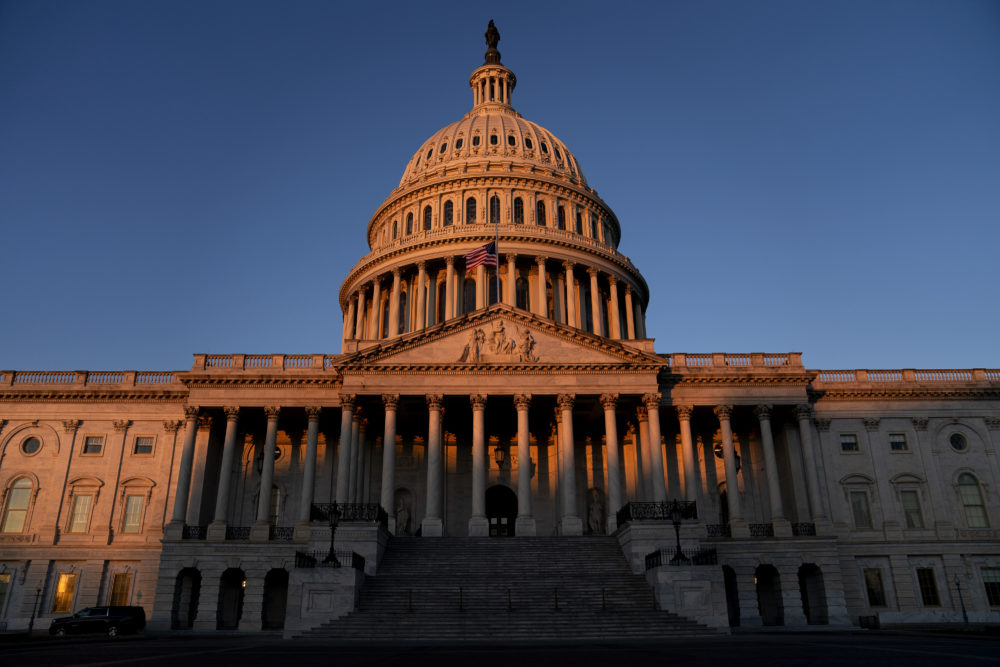
Reapportionment madness ensues after Census eliminates, adds congressional seats
Pennsylvania, Arizona, Texas, and more were affected in different ways, but the same uncertainty on the census count will last for months.
The U.S. Census Bureau recently released the congressional apportionment population counts for 2020, and though it’s not the complete census data, state leaders across the nation are already grappling with how to proceed with the impending redistricting measures, fighting gerrymandering, and deciding which congressional districts to be eliminated.
The Bureau also released the number of representatives for each of the 50 states, along with the resident population counts for the nation, the 50 states, the District of Columbia, and Puerto Rico.
Texas emerged the winner in terms of Congressional seats added until the next census. Colorado, Florida, Montana, North Carolina, and Oregon each added one seat, and Seven states each lost one: California, Illinois, Michigan, New York, Ohio, Pennsylvania, and West Virginia. The rest remained the same.
For those with gains and losses, so proceeds the redistricting process. But for those who remained the same — like Arizona, which was projected to add a congressional seat — leaders are looking into what went wrong. Namely, the politicization of the census, which added to already present delays caused by COVID-19, and a rushed count.
In New York, which lost a congressional seat, legislators are lamenting that for the sake of 89 uncounted individuals, the entire state lost a congressional seat.
In Arizona (where the census found a decrease in population), it’s a case of either gross overestimation before the count, or that the new census figure is a reflection of failing to reach all populations.
Rep. Ruben Gallego believes it’s the latter, along with transformation the census into a main point of politics. In any case, the consequence is a loss of billions worth of funding for constituents.
“Last Congress I co-led the Census Deadline Extension Act to extend the count because we *knew* Latinos, Native Americans, and Arizonans in rural & hard-to-reach areas weren’t being counted. This undercount is an intentional part of Trump’s legacy.” Gallego tweeted following the census announcement.
Last Congress I co-led the Census Deadline Extension Act to extend the count because we *knew* Latinos, Native Americans, and Arizonans in rural & hard-to-reach areas weren’t being counted. This undercount is an intentional part of Trump’s legacy. https://t.co/SJt1MLauVz
— Ruben Gallego (@RepRubenGallego) April 26, 2021
That’s the situation with a state that remained the same, and even so, AZ's Independent Redistricting Commission is likely to look into serious rebalancing discrepancies in the change in population in some districts relative to others.
In other parts of the nation that gained seats, parties await launching campaigns into unknown territory.
Texas, for instance, with two gains, must wait to see how the redistricting process ends, and where they will have more ground than others in order to shape politics to fit the newly-created districts that need representation. It leaves little room for preparations to find and elect adequate congressional representation.
Because of the uncertainty with deadlines, some organizations have taken it upon themselves to ensure transparency, and above all, that the outdated maps aren’t used in upcoming elections, especially in states with losses like Pennsylvania, because the new districts must be drawn in time for the Congressional primaries next year.
This will also be when the specific breakdown in terms of Latino populations and other communities of interest and how they should be represented will be released.
“It’s going to be a complicated process. That’s why several groups including one of our affiliates, the National Redistricting Action Fund, are filing litigation already, to make sure that the process moves forward the way that it should.” Fernando Treviño Martínez, state director for The National Democratic Redistricting Committee (NDRC) told AL DÍA.
The litigation, though courts will probably say they are too early to proceed considering the process for redistricting hasn't even started, has set a precedent.
He said the process must be finished in time, with public input, to make sure that the elections in 2022 run with the new maps instead of the outdated maps due to time constraints.
The fight for #FairMaps is about ensuring that our democracy accurately represents the will of the people. Tonight, our C4 affiliate, NRAF, initiated lawsuits in three states to work toward that goal.
— NDRC (@DemRedistrict) April 27, 2021
Click here for state-specific info https://t.co/k2xwR1DiiW pic.twitter.com/pQ9X44AYeq
Until then, work has already begun in identifying which district should be eliminated. In Pennsylvania, it’s the western congressional districts that are at risk of elimination.
Treviño says that his group, NDRC, led by former Attorney General Eric Holder, is specifically looking at Pennsylvania’s 15th Congressional District. The NDRC recently released a statement calling for consideration.
We believe that’s the district that lost the most population because of internal shifts,” Treviño told AL DÍA. “The way the population shifted in Pennsylvania indicates that other areas of the state should stay as they are, as close as they are, and the district that lost the most population should be the one that merges with other districts.”
He emphasized that when it comes to the Census, it should veer away from partisan favor.
“This is not political,” he said. The idea of redistricting is that the districts should be as close as they can get to the same amount of people in each district. So if one specific district is losing population, and the others are gaining, just by pure math and data you can just identify where that district should come.”
RELATED CONTENT
And it’s not just the redistricting process that will be drawn out in Pennsylvania, but the political nature of the entire process in the state that furthers delays. It’s akin to passing a bill.
In Pennsylvania, there are two different processes in play. One to draw the congressional maps, and another to draw the legislative maps — meaning for state senators and representatives. Neither of the two processes can start without the final census data, expected in late Summer or the Fall.
It’s a longer process this time around due to the delays while the census was being conducted, and COVID-19. Getting it finalized is going to add extra pressure on elected officials to finish the process.
Once the map is finally drafted, it must be introduced to the State Government Affairs Committee in the House and Senate, where members of that committee debate, edit, make amendments and eventually pass. Then it moves to a general floor vote.
“So there’s the whole legislative process. In cases like Pennsylvania, both chambers are led by Republicans. You know that whatever bill moves forward, it’s going to lean Republican,” Treviño said.
Afterward, the bill goes to the governor to sign or veto it. Because of the split between Republican-driven processes on the legislative side, there's a chance Governor Tom Wolf will veto the law depending on what he’s presented with.
If it comes back to the House and Senate, it has to get through a process to see if they can override the governor’s veto, but as was the case with the last time Pennsylvania dealt with redistricting and a governor’s veto, the redistricting map proposal would likely make it to the Supreme Court in Pennsylvania.
The Court would either send legislators back to draw new maps, or it would draw its own map, taking over the process as it did 10 years ago.
“We want to make sure that the process moves forward, that it has public input, that the public participates in the process, and that the courts step in if need be as they did last time,” Treviño said.
There’s a lot in the works, and this is just one state.
Just as lawsuits have emerged in Pennsylvania, The National Redistricting Action Fund has also announced litigation in Louisiana and Minnesota based on the foresight that these states will be unable to reach redistricting measures in time.
“The lawsuits filed today seek to ensure that the court is ready to move forward with its own process of drawing new maps, in the likely event these states reach an impasse on redistricting,” an NRAF statement reads.











LEAVE A COMMENT: